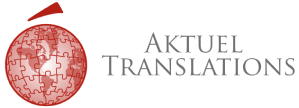I hate starting anything with a caveat, but here I am doing just that: this article is really just for people who do not buy a lot of translation and would like an overview of the process. As a consequence, it might seem a bit simplistic to some but will certainly save you time and money and improve the quality of your translations in the long run. So it’s worthwhile, I hope.
Source file
Editable files are king (Microsoft Office applications as a rule). They save the translator time and make the translation more economical. They also allow for a very precise word count and quote before a job starts.
If you have PDF files, scans, hardcopies or design files such as InDesign, Autocad or Quark, it may be worth your while to spend some time converting to a readily available and editable format.
Briefing
As much information and data as possible is always a help.
This can include:
· Previously translated material;
· Other reference material relevant to the translation subject or explanatory;
· Translation Memories (if you have them);
· Style guides, dealing with a host of things relating to the tone of the document, the target audience, use (webpage, printed material, internal document etc).
Important note:
You may want to ‘rank’ your text at this point, this may save you money, as the translation might not need a full line edit if, for example, it is only required for general comprehension. On the other hand, if it is to be used in a public arena or for complex instructions, then the editing process will need to be more comprehensive.
See here for a fuller explanation.
Lead times
A professional translator will be translating around 2000 words per day. A proof reader (if one is used), will line edit 1000 words an hour or spot check 5000 words an hour.
Having said that, translation is scalable to a degree: so more translators can be put on a project to speed up the process of translation, although proofing remains a constant.
Example:
Project: 10,000 source words to translate, semi-technical text in word
1 translator, 1 proof reader and a PM (project manager)
½ day set up (source a translator and proofer who is well-qualified for the subject matter in hand)
4-5 working days to translate
1 day to line edit
Total 6-7 working days for a fully proofed project that will be of very high quality.
2 translators, 1 proof reader and a PM
½ or 1 day set up (source two translators and proofer who is well-qualified for the subject matter in hand)
2-3 working days to translate
1 day to line edit
Total 4-5 working days for a fully proofed project that will be of very high quality.
Note: Urgency fees may apply.
3 translators, 1 proof reader and a PM
½ or 1 day set up (source three translators and proofer who is well-qualified for the subject matter in hand)
2 working days to translate (or somewhat less)
1 day to line edit
Total 3-4 working days for a fully proofed project that will be of very high quality.
Note: Urgency fees are very likely to apply.
Prices
These days, translation is nearly always charged by the number of words in the source text. Some agencies do charge per key stroke, or ‘standard page’ but Microsoft does a good job of counting words and the industry, as a whole, seems happy with this. It is another reason why editable text is preferable as it makes for precise word counts.
Minimum charges
Under around 500 words, most translators (freelancers and agencies) will charge a minimum charge. Nobody really likes minimum charges, as invoicing the same for 10 or 100 words seems unfair. However, set up time, briefing etc. take time regardless of how small a job is.
It follows then that it is best to get as much text together before translating. A good target is 1000 words. Bear in mind that most people will give discounts after 10,000 words.
Note: Make sure, as far as possible, the text for translation is signed off. Sending through incomplete text or unedited files that require you to then pass on edits piecemeal to the translation company should be avoided, if at all possible. It adds to the cost and can slow a process up.
CAT Tools and Translation memories
CAT tools and Translation memories (TMs) all essentially work the same way: they recognize previous ‘strings’ of translation and glossaries and re-use them in subsequent translations.
This saves time and therefore money and has the added advantage of making sure translation is consistent over long periods and using different translators.
CAT tools can be calibrated across 100% matches, 90% matches, or ‘fuzzies’ (where the software is almost sure the translation is correct, so it only requires a proof) and new text requiring complete translation.
Again, they work only with editable file formats.
CAT tools are best viewed as a good servant but a bad master. This is partly because, like all software, there will be glitches. However, it is also down to the fact that the stored translations (even the so-called ‘perfect matches’) have been human translated and can therefore contain human error. Thus the whole document, unless you are will to take a risk, needs re-proofing to a greater or lesser extent.
Machine Translation (MT)
For purposes of general comprehension. No more. Over 90% accuracy sounds good – but imagine if one in every ten words you wrote was ‘wrong’ and you start to see the problem.
Any questions, just email robin.bennett@aktueltranslations.com





Recent Comments